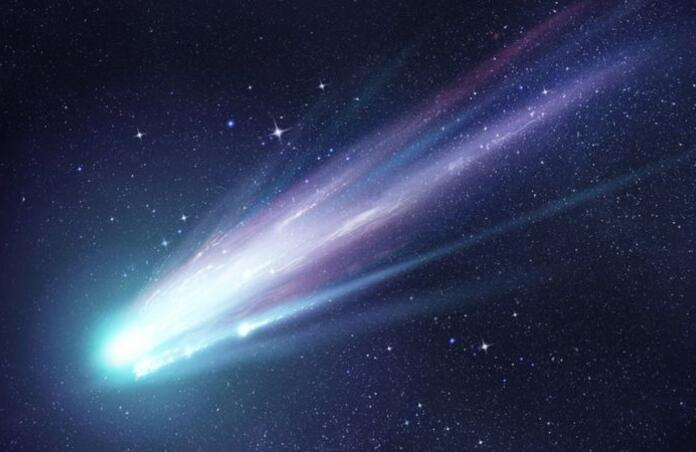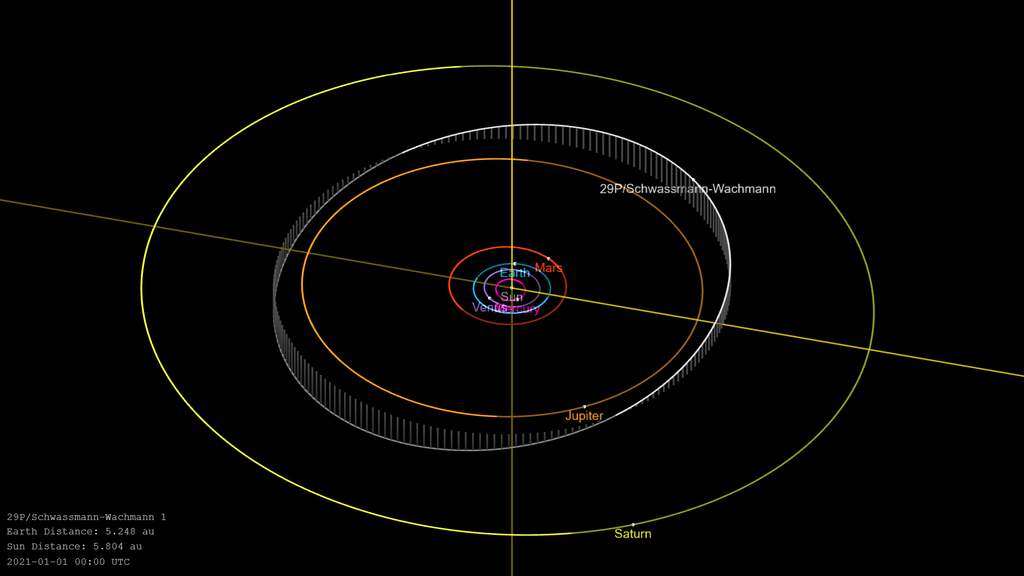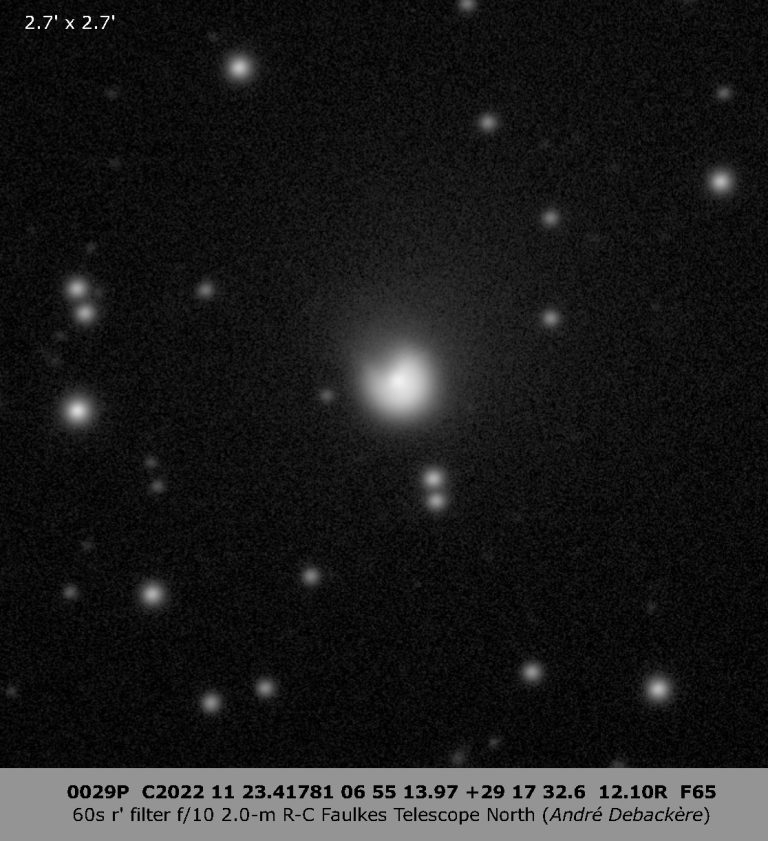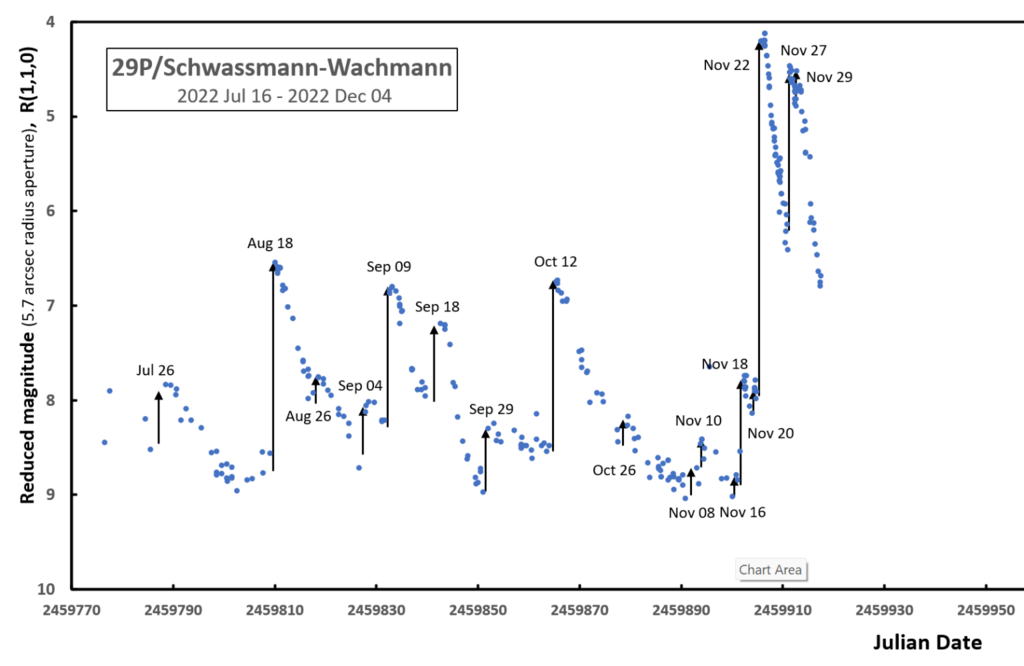Enormous Eruption From Icy Comet Detected

A massive eruption from a volcanic comet flying through the solar system has been observed by astronomers, estimated to be ejecting more than 1 million tons of debris into space. The active comet is named 29P/Schwassmann-Wachmann, spanning 60km across with an orbital period of nearly 15 years.

29P is believed to be the most volcanically active comet in our solar system, being one of a mere 100 comets named ‘centaurs’ which are small bodies home to the outer solar system. These comets' orbits have migrated, being pushed from a ring of icy objects just beyond Neptune, dubbed the Kuiper belt, to a closer orbit between Jupiter and Neptune.
The comet was believed to be having a quiet spell at the start of November, with its coma fading to the faintest it had been in over 6 months. However, this wasn’t for long since the very next day a new period of intense activity on the nucleus began. What followed was 5 mini outbursts, along with 3 strong eruptions displaying a dramatic increase in brightness of 4 magnitudes as spotted by amateur astronomer Patrick Wiggins. Additional observations by other astronomers uncovered that this sharp increase was due to a massive volcanic eruption, the second largest seen on 29P in the last 12 years.
Volcanism on the icy planetesimal is very different to that seen on earth. On earth, extremely hot magma and ash from the mantle is ejected, however 29P expels freezing cold gases and ice from its core. This oxymoronic type of volcanism is known as cryovolcanism. There are a number of astrophysical bodies in our solar system which exhibit this strange volcanic activity, such as Saturn’s moon Enceladus, Jupiter’s Europa and Neptune’s Triton. These bodies have a surface crust surrounding a mainly solid icy core. Sublimation of the icy interiors to gases can occur due to the sun’s radiation, which builds up pressure beneath the crust. As the crust is weakened over time by radiation, the sub-surface pressure causes the outer shell to crack, shooting out cryomagma.
The icy ejecta is comprised of carbon monoxide, nitrogen gas and some icy solids and liquid hydrocarbons, which, according to representatives at NASA, “may have provided some of the raw materials from which life originated on earth”. The spewed material from the recent eruption reached up to 56,000km from the comet, travelling at speeds of up to 805mph.

Images of the comet during its explosive episode show that the plume formed a pac-man-like shape, implying that the eruption spanned from a single point or region on the surface. Additionally, it is thought that 29Ps most violent outbursts follow a cycle based on its orbit around the sun. Several large eruptions were detected between 2008 and 2010, therefore, it is believed that the activity is a continuation of the eruptive event comprising 4 consecutive outbursts in September 2021, and it is likely that there will be at least one more major eruption by the end of 2023. The observations also support previous investigations that suggest 29P’s eruptions are linked to its rotation, with eruptions matching up with its 57-day rotation period. Astronomers believe that due to the comet’s slow rotation, solar radiation is unevenly absorbed on the surface, triggering eruptions.

However, it is unclear how this longer eruption cycle is occurring, since 29P has a circular orbit and therefore doesn’t have periods in its orbit which are significantly closer to the sun like most other comets in elliptical orbits. The James Webb Space Telescope is scheduled to get a closer look at 29P early next year, and will hopefully uncover more about the planetesimal's unique volcanic activity.
--
Cover image: Getty images
